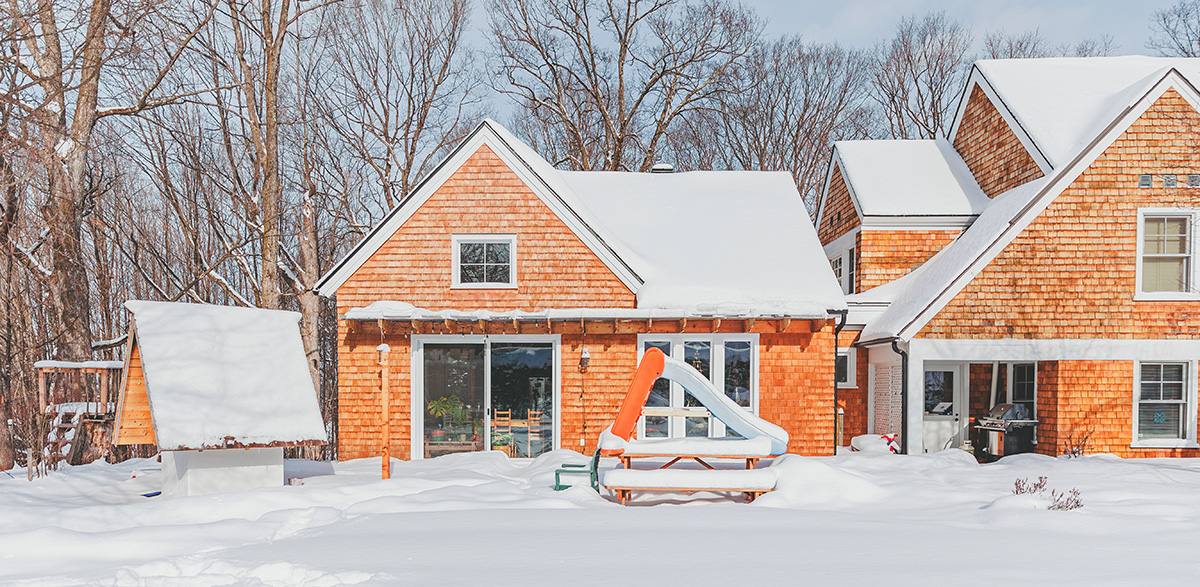Wood, hemp, straw… even mushrooms! Plant-based construction materials are becoming more diverse and are gaining an increasing share of the market in the building industry. While some are still at the research stage, the interest they generate is undeniable.
“Wood is the ultimate bio-based material in Quebec—it accounts for more than 90% of this type of material used in construction,” says Pierre Blanchet, professor in the Department of Wood and Forest Sciences at Université Laval and chairholder of the Industrial Research Chair on Eco-Responsible Wood Construction (CIRCERB).
Let’s clarify right away: when we talk about “bio-based materials,” we mean materials that come from living organisms, either in whole or in part, of plant or animal origin.
“The trend largely comes from architects, mainly for large, non-residential projects. The integration of bio-based materials began with LEED certification, which encouraged greater use of wood and wood composites in building envelopes,” explains Mr. Blanchet. “There’s a lot of industrial development and research happening around insulation,” he adds.
The appeal of bio-based materials lies in their smaller ecological footprint compared to petroleum-based ones. “Environmental impact always depends on what you’re comparing it to. But life-cycle analysis of materials shows a clear advantage over fossil-based materials, since extracting petroleum resources demands a lot of energy,” notes the researcher.
At CIRCERB, Mr. Blanchet is working on creating a rigid insulation material made from cellulose filaments (recycled from newspapers) and glycerol (a by-product of biodiesel production). Cellulose fibers are also being used to design a weatherproof membrane by blending them with “resins produced through green chemistry.” This membrane could potentially replace synthetic, petrochemical-based ones like Tyvek.
“Our goal is to work within the spirit of a circular economy, using wood residues. Our society is built for square things, but a tree trunk is round!” exclaims the researcher, noting that the industry produces 30% to 40% of “co-products” that can be recovered in this way.
Beyond wood, research is also exploring the use of straw in construction. “It’s still being used, but it’s marginal—there’s a hill to climb. There were horror stories in Quebec in the 1970s that left a mark,” says Pierre Blanchet.
“Rot, vermin… straw has a bad reputation. You need to have faith” to work with this material, says Normand Hudon, senior architect at Coarchitecture. He’s currently working on an experimental building that incorporates straw.
“Straw offers very high thermal resistance at a low cost,” says Mr. Hudon, who sees the potential for creating energy-autonomous buildings, perhaps even “carbon-negative” ones.
The architect also points to the abundance of the resource in Quebec. However, “since the stalk isn’t edible, it doesn’t get much value,” which is exactly why integrating it into construction makes sense.
Among the innovative products being developed elsewhere, Pierre Blanchet mentions MycoBoard—plywood panels made from wood and mycelium (the root structure or “white part” of mushrooms), designed in the United States. The mycelium replaces the synthetic adhesives typically found in panels currently on the market. “It’s a material that might show up here in the future, much like straw.”
While the use of hemp in construction is fairly widespread in Europe—particularly in France and Belgium—it’s still relatively unknown in Quebec, according to Félix Ladouceur of Nature Fibres.
The company, based in Asbestos and founded less than two years ago, produces hemp insulation panels mainly for the residential market.
“We’ve seen a nice increase in demand. At first, we sold directly to contractors, but now we work with distributors,” says Mr. Ladouceur, head of business development at Nature Fibres. “We’re in talks with major chains to get into hardware stores, but I can’t say more just yet.”
Aiming for high production volumes, Nature Fibres imports much of its raw material from France. “Hemp cultivation isn’t developed enough in Quebec. We’d need hundreds and hundreds of hectares just for us, while the province only produced around 2,000 hectares of hemp back in 2016,” explains Mr. Ladouceur.
The company’s hemp panels are more expensive than mainstream products like fiberglass or mineral wool but less expensive than expanded polystyrene. Beyond thermal resistance, hemp panels also provide excellent sound insulation and moisture control: “they can absorb up to 20% of their weight in water and release that moisture in very dry conditions,” says Félix Ladouceur.
